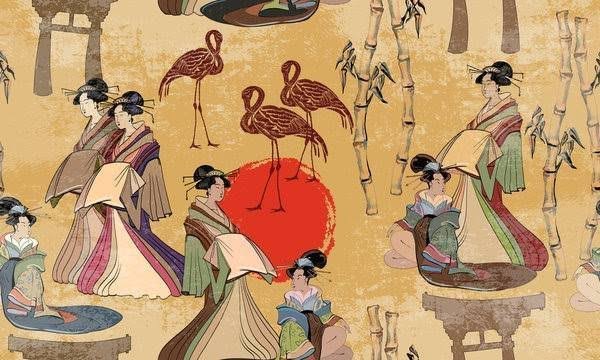The Magic of Nikabeia: A Cultural Journey
Introduction
Have you ever heard of Nikabeia? If not, you’re not alone. This hidden gem, rich in culture and history, remains largely unknown to many. But today, we’re going to change that. By the end of this blog post, you’ll have a newfound appreciation for Nikabeia, an ancient tradition that has captivated hearts and minds for centuries. Whether you’re a history buff, a cultural enthusiast, or just curious about the world, this post is for you. Let’s dive into the fascinating world of Nikabeia!
What is Nikabeia?
Nikabeia is more than just a word; it’s a tradition that dates back to ancient times. It represents a series of rituals and celebrations that are deeply rooted in the heritage of a specific community, believed to have origins in an ancient civilization. The exact meaning of Nikabeia can vary depending on who you ask, but it generally refers to a celebration of life, community, and the connection between people and their ancestors.
The Origins of Nikabeia
The roots of Nikabeia stretch far back into history, with its origins believed to be tied to an ancient civilization that valued community and spiritual connection. Though the exact timeline is somewhat murky, it’s clear that Nikabeia has been a part of human culture for thousands of years. The tradition likely began as a way to honor ancestors and celebrate the harvest season, bringing people together in a spirit of unity and joy.
The Significance of Nikabeia
Nikabeia is not just a celebration; it’s a cultural event that holds deep meaning for those who participate in it. The rituals and ceremonies performed during Nikabeia are designed to strengthen the bonds between community members, remind them of their shared history, and celebrate the cycles of life and nature. It’s a time when stories are told, songs are sung, and people reflect on the past while looking forward to the future.
How Nikabeia is Celebrated Today
While the core of Nikabeia remains unchanged, the way it celebrated has evolved over time. In modern times, Nikabeia marked by colorful parades, traditional music, dance performances, and communal feasts. People dress in traditional clothing, and the streets come alive with the vibrant energy of the celebration. It’s a time for communities to come together, reconnect, and keep the spirit of their ancestors alive.
The Rituals of Nikabeia
The rituals of Nikabeia are deeply symbolic and vary slightly from one community to another. However, some common elements include:
- Ancestral Offerings: Participants often create altars with offerings such as food, flowers, and incense to honor their ancestors.
- Dance and Music: Traditional dances and music play a significant role, with performances that tell stories of the community’s history.
- Feasting: A communal meal shared, symbolizing unity and abundance. The dishes served often have special significance, with recipes passed down through generations.
- Storytelling: Elders share stories of the past, passing down wisdom and keeping the community’s heritage alive.
The Cultural Impact of Nikabeia
Nikabeia has had a lasting impact on the cultures that celebrate it. It serves as a living link to the past, ensuring that the traditions and values of the community are preserved for future generations. The festival also fosters a sense of belonging and continuity, which crucial in today’s fast-paced world where traditions can easily be lost.
Why Nikabeia Matters Today
In a world where modernity often overshadows tradition, Nikabeia stands as a reminder of the importance of cultural heritage. It teaches us the value of community, the need to honor our past, and the joy of celebrating life’s cycles. By participating in or simply learning about Nikabeia, we can gain a deeper understanding of our own place in the world and the shared experiences that bind us all together.
Conclusion
Nikabeia is more than just a festival; it’s a celebration of life, community, and tradition. It reminds us of the importance of staying connected to our roots and appreciating the cultural richness that defines us. Whether you’re directly involved in the celebration or simply an observer, Nikabeia offers valuable lessons in unity, respect, and the enduring power of tradition.
Frequently Asked Questions (FAQs)
1. What does Nikabeia mean?
Nikabeia refers to a traditional celebration that honors ancestors, community, and the cycles of life. It’s a festival deeply rooted in ancient cultural practices.
2. Where does Nikabeia originate?
Nikabeia originates from an ancient civilization, though its exact roots are not entirely clear. It has been passed down through generations as a vital part of cultural heritage.
3. How Nikabeia celebrated?
Nikabeia celebrated with rituals such as ancestral offerings, traditional music and dance, communal feasts, and storytelling. It’s a time for communities to come together and honor their shared history.
4. Nikabeia still celebrated today?
Yes, Nikabeia still celebrated today, though the specific customs and practices may vary from one community to another. The essence of the festival remains the same.
5. Why is Nikabeia important?
Nikabeia is important because it preserves cultural traditions, fosters a sense of community, and helps people stay connected to their heritage.
6. Can anyone participate in Nikabeia?
While Nikabeia traditionally celebrated by specific communities, anyone with respect for the culture and a genuine interest can participate or observe the festivities.

Leave a Reply